Currently, high-performance electronic materials, smart homes and Internet of Things (IoT) technologies are developing rapidly. Sensing technology, especially flexible pressure sensors, has become an indispensable part of people’s lives. The sensing methods of this pressure sensor can be divided into piezoelectric, electrically compatible, and piezoresistive.
In order to achieve the best practical match, it is important in many aspects to determine the efficiency of these sensors. Research has found that some conductive polymers have a piezoresistive effect, but the impact of piezoresistiveness on polymer insulating materials is difficult to achieve. However, recent research has shown that conductive fillers can make insulating polymers conductive. Therefore, the selection of conductive substrate materials has always been the focus of professional testing, especially conductive fillers.
Piezoresistive Flexible Pressure Sensor
Piezoresistive sensors apply an external force to deform the compound. To a certain extent, the contact position and distribution of the conductive filler in the composite material are changed, so that its resistance often changes. Therefore, they do not involve complex sensor structures. Unlike piezoelectric or capacitive pressure sensors, various stress tests, low energy consumption, and easy fabrication processes facilitate extensive analysis of these sensors. Suitable for physical exercise, seal inspection and medical inspection. Currently, there are some commercial products on the market, such as smart bras, which can track the heart beating speed by changing resistance and prevent the occurrence of some diseases.
Capacitive Soft Pressure Sensor
The sensor has the characteristics of fast response, large dynamic range and high sensitivity, and is based on parallel plate capacitors. The sensor capacitance is adjusted by changing the distance between the capacitor plates when an external force is applied. Find the capacitance using C=εA/d, where d is the spacing between electrodes, A is the effective plate area, and ε is the dielectric constant. By changing the external pressure, you can change d, changing the displacement of the elastic material in response to the forward force, adjusting the shear force by changing A, and changing these two parameters at the same time, thus adjusting the tension. For the dielectric layer, due to the Young’s modulus of high elastomers, such as PDMS and other dielectric elastomers, whose small Young’s modulus is 5kPa, it is difficult for the sensor to achieve high sensitivity.
Piezoelectric Elastic Pressure Sensor
Because the materials are simple to make, telecommunication numbers are easy to obtain, and the price is low, researchers are paying more and more attention to compact piezoelectric pressure sensors. They are mainly composed of piezoelectric compounds that can convert mechanical energy into electrical energy. Its conduction process is: if the compound is deformed due to external pressure, positive and negative electrical segregation may occur in the working compound or substance. Negative and positive charges are in opposite directions on the opposite sides of the material, creating a potential difference within the material. These potential differences were examined to examine the influence of external factors.
Electronic Skin Elastic Pressure Sensor
Due to its excellent mechanical and electronic output power, research on pressure sensing instruments has made great progress in recent years, showing promise for practical applications. This has also led to the development of many other sensing technologies, including wearable pressure sensors and electronic skin tactile sensors, which are involved in medical diagnosis, artificial intelligence (AI) and physical health monitoring.
Electronic skin flexible tactile sensors are widely used in human skin tactical physician sensing and thermal measurement. Electronic skin can be used as fabric and can be used on robots or outside the human body. Because of its softness and lightness, it can simulate the sensory functions of human skin to form different graphics. After that, the physiological state can be recognized and the intelligence of the robot can be enhanced. Research on electronic skin tactile sensors was first initiated in the 1970s. Earlier, tactile sensor technology has matured, focusing on achieving scalability, flexibility, multifunctionality, and lightweight. Many tactile sensors are silicon microsensors, using MEMS manufacturing technology. But at that time, scalability and flexibility criteria could not be met, which motivated researchers to seek new materials. Valuable new materials include the development of a series of “sandwich” pressure sensors that enable electronic skin tactile sensors with greater scalability, stability and flexibility, and with great accuracy. It lays a solid foundation for the production of AI robots and ultra-soft elastic electronic skins.
Improving environmental agility and building new human-machine deployment models using multiple sensors are the focus of today’s technological development. Many issues related to electronic skin still need to be solved. First, to design the best bionic skin sensor, to maintain a high stretch rate, it must have high elasticity and flexibility, which requires high-level production technology, materials and structural design. Therefore, the high price of producing tactile sensors limits the mass production of electronic skin sensors.
Second, it is particularly important to solve the problem of signal crosstalk between adjacent sensor modules in the sensing array. Anti-collision designs are carried out for lightweight multi-dimensional tactile sensors of different types and structures. Its lightweight tactile sensor characteristics are also very different from the subtle sensations of human skin. In addition, many current touch sensors have only one function, mainly focusing on pressure measurement. Only a few touch components have the functions of measuring temperature, pressure, roughness, humidity, etc. Therefore, to develop a new multifunctional electronic skin touch sensor, it is necessary to achieve high efficiency of human skin.






